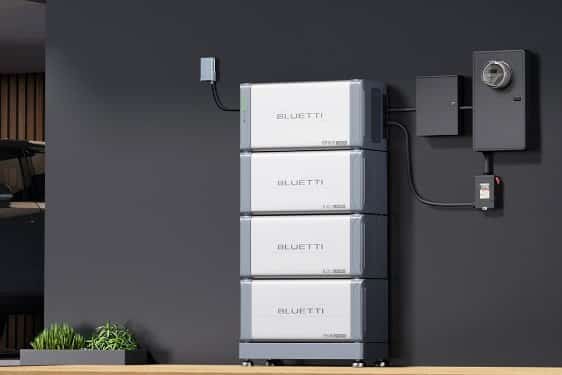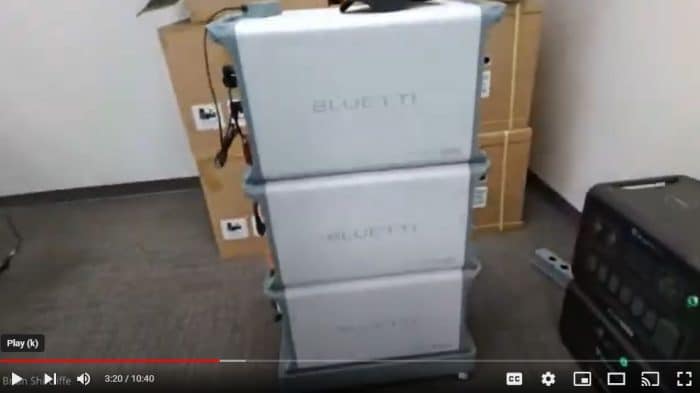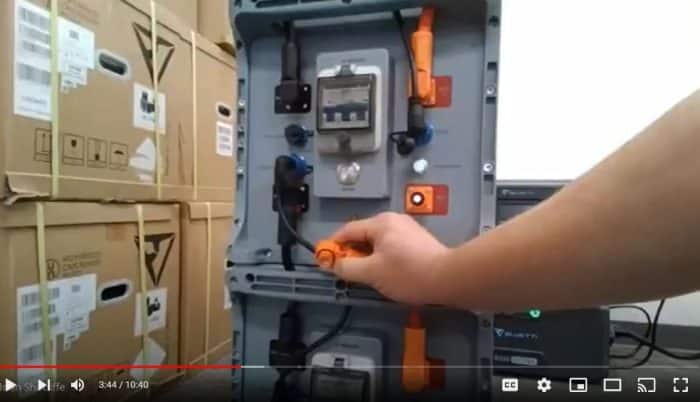
The home battery storage space is getting crowded (as you’ll see in the 2024 Energy Storage Buyer’s Guide). One intriguing contender is Bluetti, which has built its brand in the portable battery market, but now has robust (but simple) products for solar pros to install.
“We’re really well known in the consumer space,” says Brian Shircliffe, sales director with Bluetti. “We manufacture anywhere between you know 200 watt hour to about 18,000 watt hour portable batteries. These are ones that you can take out camping, use them in emergency situations, you can charge them portable solar panels.”
So, how does that background change Bluetti’s approach the solar + storage home backup segment? The difference is in Bluetti “scaling up” what it does, versus many other manufacturers trying to scale down. The result is simplicity.
“So, instead of having multiple components that makes sense on a large commercial building or an open field — the inverter, the battery, some switching devices — we were able to miniaturize all that into one unit, with stackable batteries, that is already kitted,’ Shircliffe explains. “You’re able to install it within a very short amount of time.”
On this episode of The Pitch, Shircliffe walks us through the finer points EP900 – Bluetti’s newest system for stationary whole home backup – as well as the virtues of pitching portable batter options to customers.
1:08 – How does Bluetti’s portable power tech impact its whole home approach?
2:37 – Overview of the EP900
6:00 – Why operate in high voltage?
6:52 – Where should I install the EP900?
7:32 – How does it handle time of use discharging?
8:13 – Should installers also sell portable batteries as a lower cost option?
Watch the full 10-min chat above, or read through part of the transcript below.
Overview of Bluetti EP900
Crowell: “I want to dig deeper into the EP900. This is 7.6 kW modular home energy storage system. It is scalable from 9.9 to 19.8 kWh, and it can be connected to solar. It has a 9 kW PV input, and you can connect a generator to it. “Could you walk us through some of the nuances?”
Shircliffe: “The way it’s installed is very similar to say a whole home generator.”

The top box is the hybrid inverter and “only all-contained mid device I know of on the market,” Shircliffe says. It sits atop two batteries.
Of note in the walk-through on the dc side:

- Large amphenol connector that snaps into place
- The battery management system (BMS) connected with simple DIN ports.
- An Internet of Things device
- Two MPP trackers that already have the MC4 connectors on there. “Each one of these is able to track 3,000 Watts, 6,000 Watts. So this is more than capable to run a 10 to 11 KW solar array”
“The ac side makes the biggest difference in my opinion,” Shircliffe says. It features:

- The snap connectors the consumption meters.
- A USB drive for quick firmware updates.
- “This is a micro grid device so we have the ability to control other devices like a generator, so we can kick on a generator if it is programmed to do that,”
You’ll want to watch the walk-through in the video for the full effect.
Connected in parallel, with high voltage batteries
“Another thing to mention is our battery, even though it looks like it’s in series, it’s actually in parallel, and it is not low voltage. A lot of the other batteries use 48 volts, we use 99,” Shircliffe says. “Amps cause heat, right? So you want to have higher voltages to be able to carry more current at lower amps, so you’re not generating as much heat with the resistance. That’s why those cables are very thick, and the amphenol connector is a metal all around.
“The BMS is even looking at it as four independent batteries, as opposed to here’s battery one, two, three, four, and they’re all draining and charging at the exact same rates. So, the higher voltage just enables us to charge it and discharge it safer and for higher capacities like 9 kW.”
Where is this typically installed? Are there outdoor installation restrictions?
“Most of the feedback that we’ve gotten is they are installing it indoors in their garage or basements. The ones that are installing them outside, we have a power shelter. It looks very similar, in my opinion to a garden shelter. Other than the word Bluetti on it, there’s nothing on it that says, ‘hey, there’s a battery in here.’”
— Solar Builder magazine
Leave a Reply
You must be logged in to post a comment.